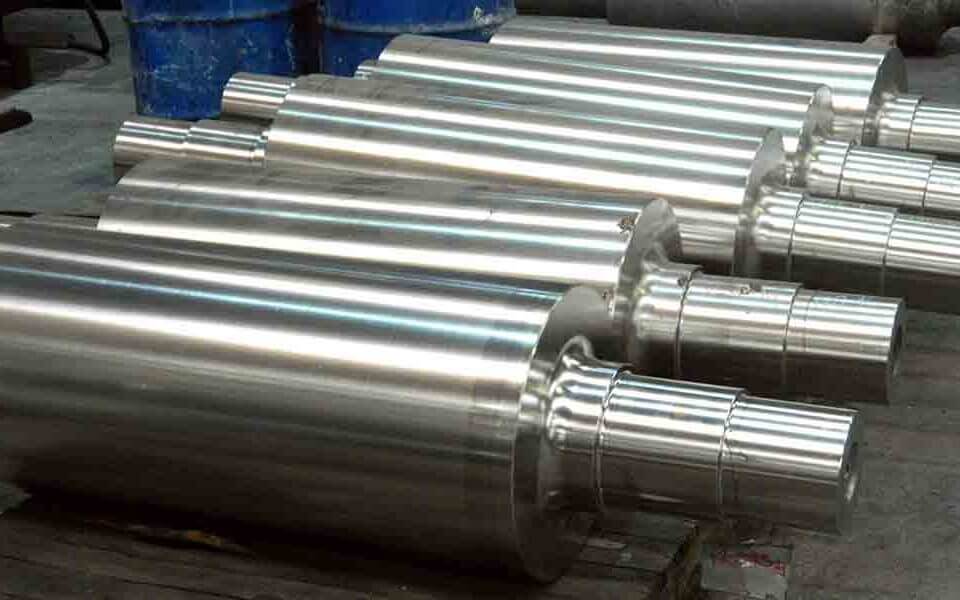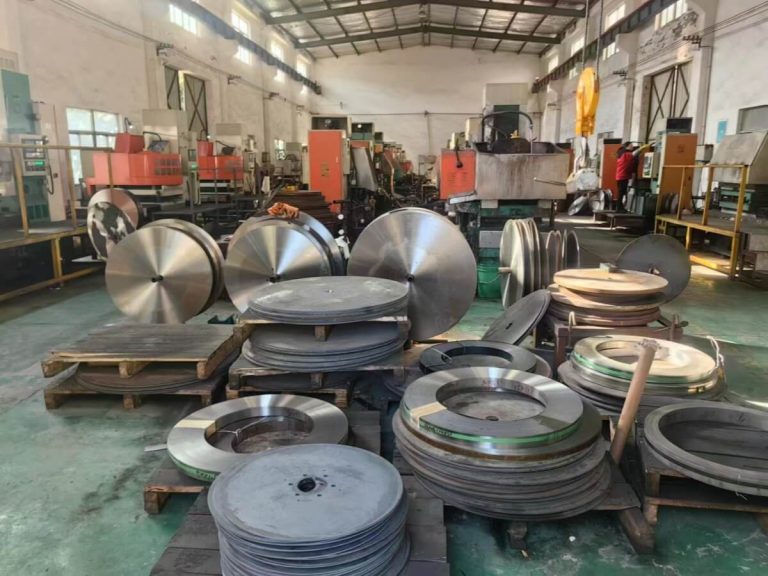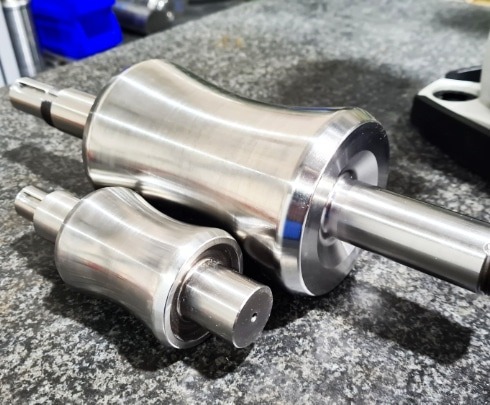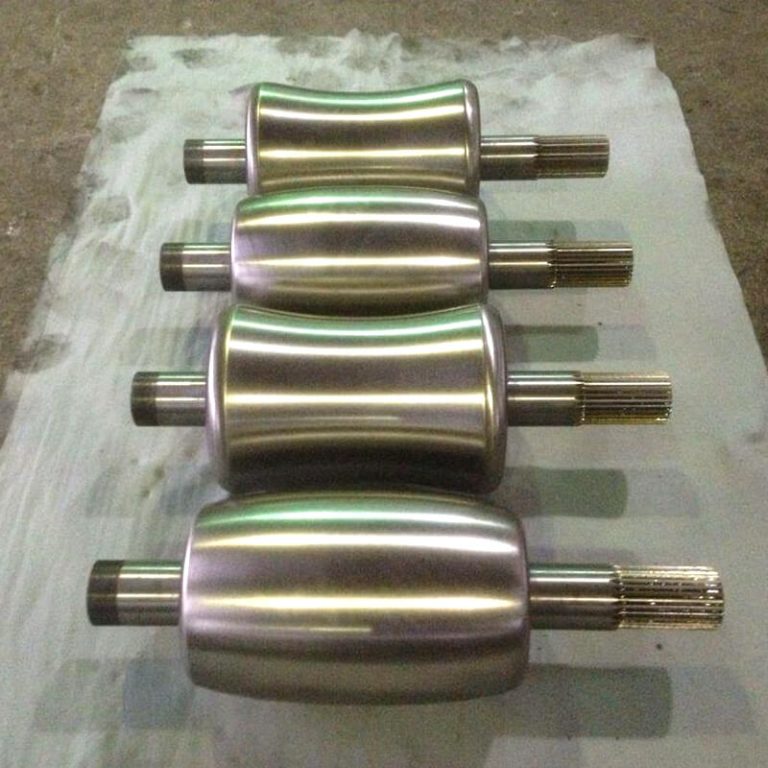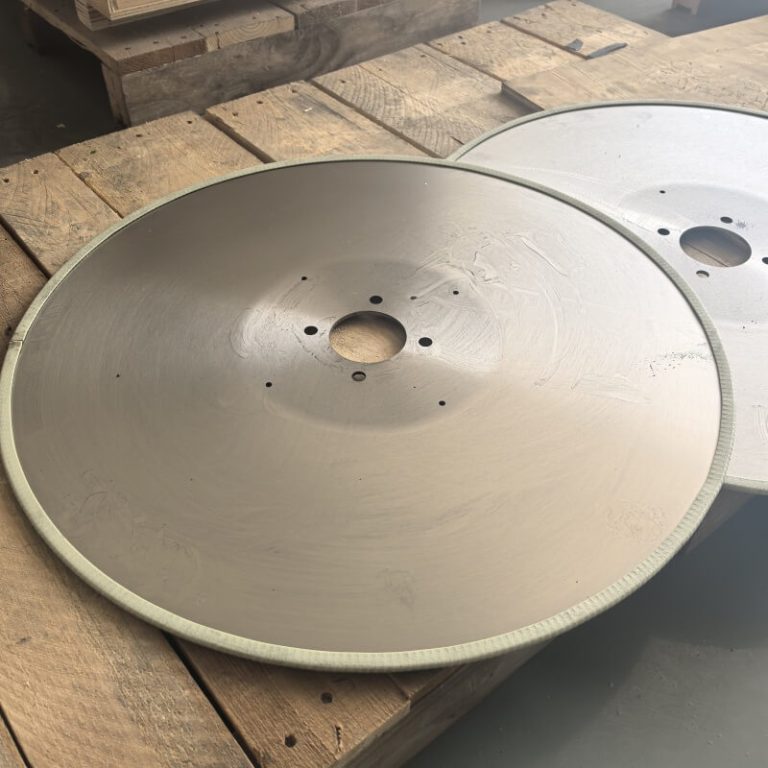Production process of straightening rollers
Straightening rollers are key components used to correct the straightness of plates, bars or profiles in metal processing (such as steel rolling, aluminum production, etc.). Their production process must take into account high precision, wear resistance and fatigue resistance. The following are typical production process flows and key links of straightening rollers:
I. Material selection
1. Base material type
– Alloy steel: Commonly used Cr5, Cr12MoV, 42CrMo, etc., with high strength, high wear resistance and impact resistance.
– Ductile cast iron: Low cost, suitable for medium and low load conditions.
– Composite materials: Surface cladding of hard alloys (such as tungsten carbide) or bimetallic composite casting process to improve wear resistance.
– New materials: Powder metallurgy high-speed steel (PM-HSS) or ceramic coated rollers, used in extreme conditions.
2. Material pretreatment
– Homogenization annealing is required after forging or casting to eliminate internal stress and refine grains.
II. Processing process
1. Rough machining
– Turning/milling: Machining the blank to a size close to the final size, leaving a finishing allowance (usually 0.5~1mm).
– Drilling/tapping: Machining mounting holes or cooling water holes (some straightening rollers require internal cooling).
2. Heat treatment
– Quenching + tempering: Improve surface hardness (HRC 55~62) and core toughness.
– Induction hardening: For local high hardness requirements, such as regional treatment of the roll neck and roll body.
– Nitriding/carburizing: Surface chemical heat treatment to enhance wear resistance and fatigue resistance.
3. Finishing
– Precision grinding: Use CNC grinders to ensure the roundness (≤0.01mm), cylindricity (≤0.02mm) and surface roughness (Ra≤0.4μm) of the roll surface.
– Dynamic balancing: For high-speed rollers, the dynamic balancing grade must reach G2.5 or higher.
4. Surface treatment
– Hard chrome plating: Thickness 0.05~0.1mm, improve corrosion resistance and wear resistance.
– Thermal spraying: Plasma spraying tungsten carbide (WC-Co) or alumina coating.
– Laser cladding: Repair the worn area or directly prepare the wear-resistant layer, with high bonding strength.
Ⅲ. Key points of quality control
1. Material testing
– Composition analysis (spectrometer), metallographic structure observation (microscope), mechanical property testing (tensile, impact test).
2. Geometric accuracy detection
– Coordinate measuring machine (CMM) to check dimensional tolerance, laser interferometer to detect roller surface runout.
3. Hardness and flaw detection
– Surface hardness tester (Rockwell/Vickers) multi-point test; ultrasonic/magnetic particle flaw detection to check internal cracks.
4. Life verification
– Fatigue test is performed under simulated working conditions to evaluate the risk of peeling of the wear-resistant layer and the ability to resist plastic deformation.
Ⅳ. Process optimization trend
1. Green manufacturing
– Use vacuum heat treatment to reduce oxidation and promote low-temperature nitriding technology to reduce energy consumption.
2. Intelligent processing
– CNC grinders are combined with AI algorithms to adaptively compensate for processing errors and improve consistency.
3. Composite process
– Laser cladding + ultra-fine grinding to achieve a balance between high precision and long life.
Ⅴ. Application matching suggestions
– Cold rolling straightening roller: High chromium steel + chrome plating is preferred, emphasizing surface finish.
– Hot rolling straightening roller: High temperature resistant alloy (such as H13) + thermal spray coating is recommended.
– Heavy straightening machine: Use bimetallic composite rollers, core toughness material (such as 42CrMo) + surface cemented carbide.
Through the refined control of the above processes, the straightening rollers can maintain long-term stable operation under high load and high wear conditions, significantly improving metal processing efficiency and product quality. Learn more details about straightening roller production, please contact us today.

